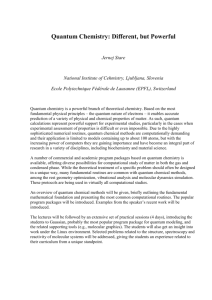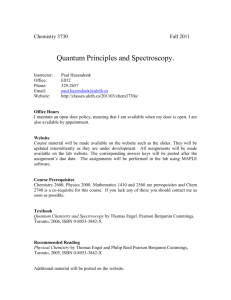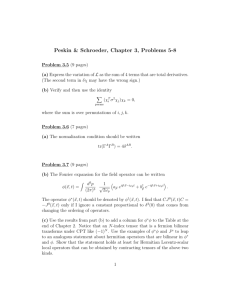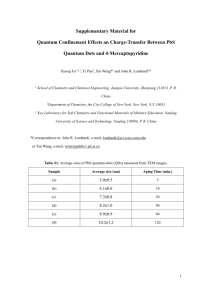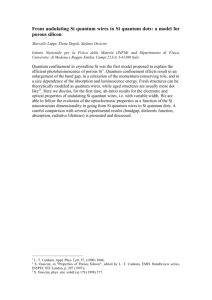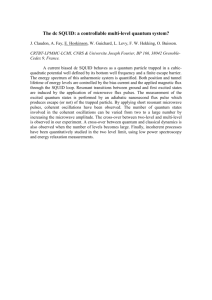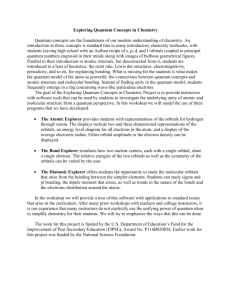CHEM 614 - QUANTUM CHEMISTRY
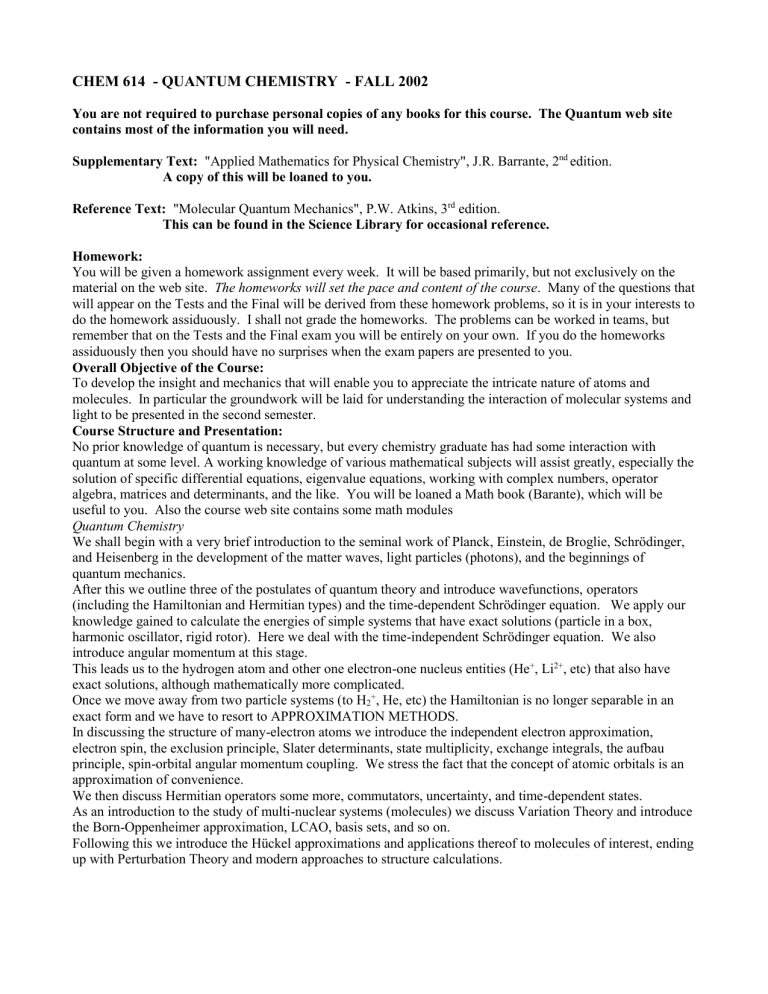
CHEM 614 - QUANTUM CHEMISTRY - FALL 2002
You are not required to purchase personal copies of any books for this course. The Quantum web site contains most of the information you will need.
Supplementary Text: "Applied Mathematics for Physical Chemistry", J.R. Barrante, 2 nd edition.
A copy of this will be loaned to you.
Reference Text: "Molecular Quantum Mechanics", P.W. Atkins, 3 rd edition.
This can be found in the Science Library for occasional reference.
Homework:
You will be given a homework assignment every week. It will be based primarily, but not exclusively on the material on the web site. The homeworks will set the pace and content of the course . Many of the questions that will appear on the Tests and the Final will be derived from these homework problems, so it is in your interests to do the homework assiduously. I shall not grade the homeworks. The problems can be worked in teams, but remember that on the Tests and the Final exam you will be entirely on your own. If you do the homeworks assiduously then you should have no surprises when the exam papers are presented to you.
Overall Objective of the Course:
To develop the insight and mechanics that will enable you to appreciate the intricate nature of atoms and molecules. In particular the groundwork will be laid for understanding the interaction of molecular systems and light to be presented in the second semester.
Course Structure and Presentation:
No prior knowledge of quantum is necessary, but every chemistry graduate has had some interaction with quantum at some level. A working knowledge of various mathematical subjects will assist greatly, especially the solution of specific differential equations, eigenvalue equations, working with complex numbers, operator algebra, matrices and determinants, and the like. You will be loaned a Math book (Barante), which will be useful to you. Also the course web site contains some math modules
Quantum Chemistry
We shall begin with a very brief introduction to the seminal work of Planck, Einstein, de Broglie, Schrödinger, and Heisenberg in the development of the matter waves, light particles (photons), and the beginnings of quantum mechanics.
After this we outline three of the postulates of quantum theory and introduce wavefunctions, operators
(including the Hamiltonian and Hermitian types) and the time-dependent Schrödinger equation. We apply our knowledge gained to calculate the energies of simple systems that have exact solutions (particle in a box, harmonic oscillator, rigid rotor). Here we deal with the time-independent Schrödinger equation. We also introduce angular momentum at this stage.
This leads us to the hydrogen atom and other one electron-one nucleus entities (He + , Li 2+ , etc) that also have exact solutions, although mathematically more complicated.
Once we move away from two particle systems (to H
2
+ , He, etc) the Hamiltonian is no longer separable in an exact form and we have to resort to APPROXIMATION METHODS.
In discussing the structure of many-electron atoms we introduce the independent electron approximation, electron spin, the exclusion principle, Slater determinants, state multiplicity, exchange integrals, the aufbau principle, spin-orbital angular momentum coupling. We stress the fact that the concept of atomic orbitals is an approximation of convenience.
We then discuss Hermitian operators some more, commutators, uncertainty, and time-dependent states.
As an introduction to the study of multi-nuclear systems (molecules) we discuss Variation Theory and introduce the Born-Oppenheimer approximation, LCAO, basis sets, and so on.
Following this we introduce the Hückel approximations and applications thereof to molecules of interest, ending up with Perturbation Theory and modern approaches to structure calculations.



